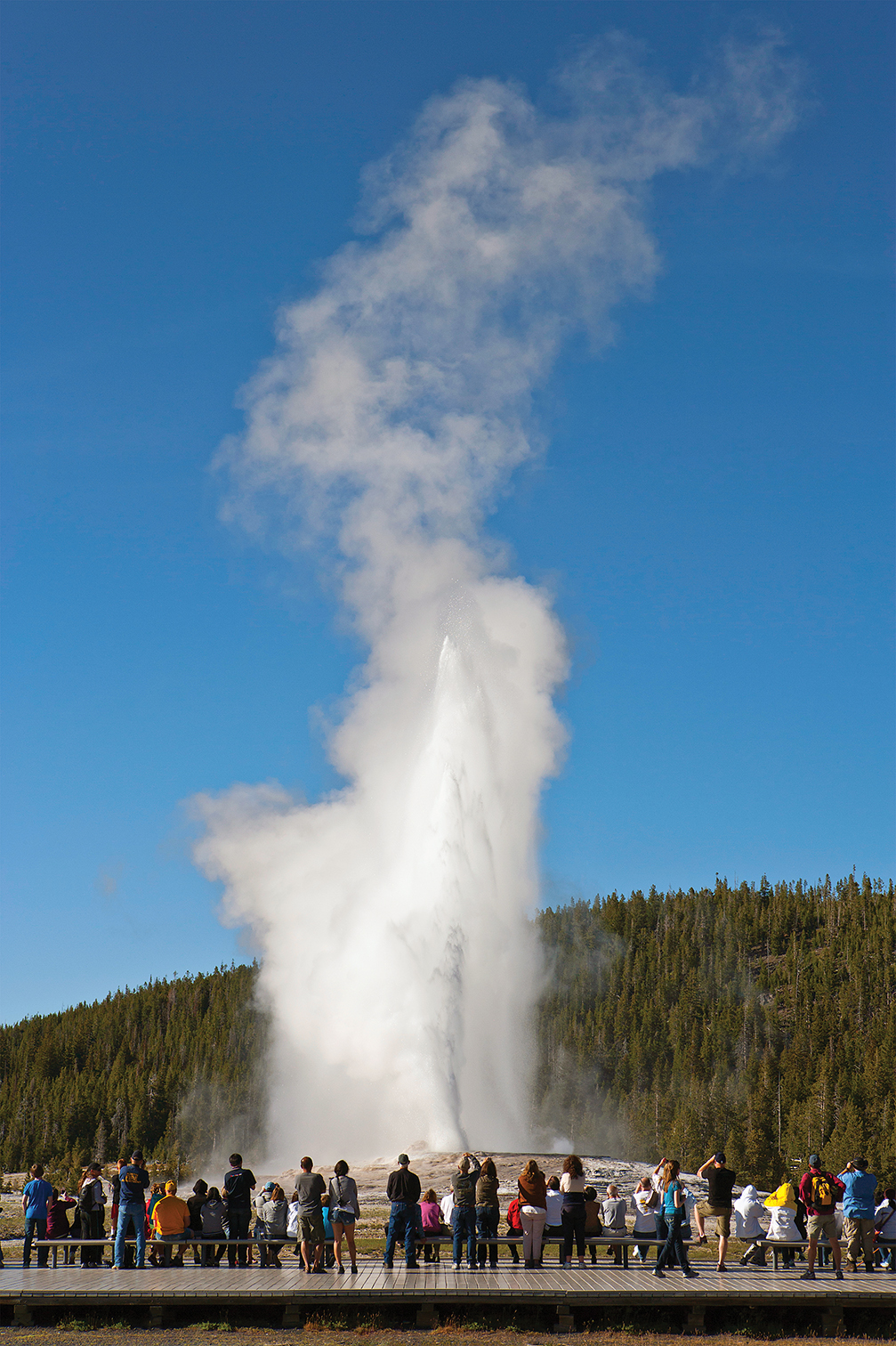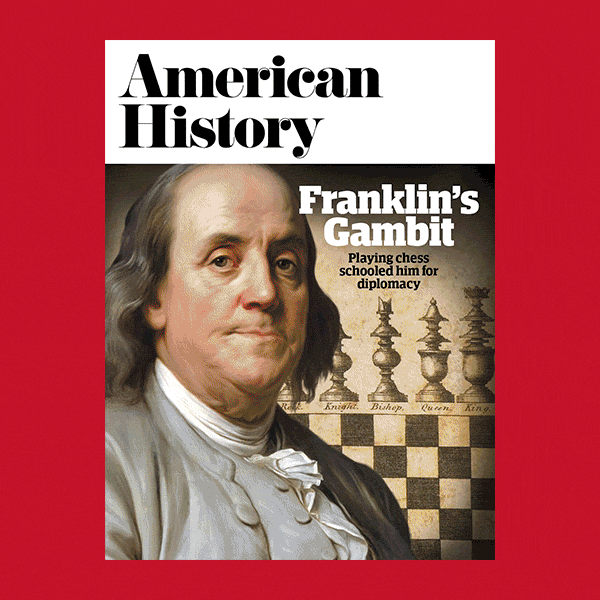Yellowstone National Park. More than 4 million people a year visit this 3,648-square-mile, seemingly unbounded paradise to watch boiling springs. They come to see thundering waterfalls and majestic mountains, elk and bison—the pure, unadulterated Northwestern wilderness.

Humans didn’t enter this scene for millions of years. Then more than 20 tribal nations discovered Yellowstone and used it as a thoroughfare, hunting ground, and ceremonial site. Fur trappers and traders appeared in the early 19th century, but no one believed their stories of bubbling springs and exploding geysers. Then, in 1871, the federal government sent an expedition to explore and map Yellowstone territory in pursuit of valuable natural resources. In a historic twist, the Reconstruction Era Congress enshrined the land as the world’s first national park.
Megan Kate Nelson, whose book The Three-Cornered War: The Union, the Confederacy, and Native Peoples in the Fight for the West was a finalist for the 2021 Pulitzer Prize in history, focuses on three often-at-odds protagonists as she unravels the park’s founding story in Saving Yellowstone: Exploration and Preservation in Reconstruction America, which recently came out in paperback.
Can you explain how the expedition to Yellowstone came to be?
Ever since the Lewis and Clark Expedition of 1804–1805, the federal government had been funding expeditions and surveys into lands across the continent. The goal was to map these areas and determine how they could be developed for agriculture and/or mining.
Until the 1850s, military officers led these explorations and took some artists and scientists along with them. One of the scientists who joined several expeditions in this period was Ferdinand Vandeveer Hayden, an ambitious and energetic geologist. After serving as a U.S. Army surgeon in the Civil War, Hayden returned to his first love: exploration. In 1867, he convinced the state of Nebraska to appoint him as one of the first civilian leaders of a geological survey and led several expeditions into the Rocky Mountains.
Like most scientists, Hayden had heard rumors about the many wonders of Yellowstone, but in 1870 it was terra incognita to most Americans (although Indigenous peoples had used it for thousands of years). It was so isolated and its visitation season so short, May–September, that it had been, until 1869, inaccessible for survey leaders coming from the East Coast. That year, the completion of the transcontinental railroad cut travel times considerably. Now Hayden would be able to reach Yellowstone and spend at least a few months exploring it before the winter set in.
And so in January and February 1871, Hayden lobbied Congress for funding to take the first federal team into Yellowstone. He was convincing. In March, they gave him $40,000 to fund the survey. Hayden assembled his team and left for the Rocky Mountains in May 1871, and they entered the Yellowstone Basin in mid-July.
How did Yellowstone become America’s first national park?
When Ferdinand Hayden set out to survey Yellowstone, he was not thinking about preserving it. He was intent on figuring out what was there, collecting specimens to send to the Smithsonian Institution, and writing up scientific papers that would establish his reputation as a renowned geologist. When he returned to Washington, D.C., in October 1871, his only plan was to write his survey report, as required by Congress.
But Hayden found a letter waiting for him from a PR man working for the Northern Pacific Railroad, whose financier, Jay Cooke, hoped the railroad would be the nation’s second transcontinental line. The letter suggested that Yellowstone would make a wonderful national park and that perhaps Hayden could mention this in his report.
Why was Jay Cooke interested in this plan? He was having trouble selling bonds to build the Northern Pacific. He figured that the preservation of Yellowstone would help him advertise the region and bring both tourists and possible settlers to the Northwest.
Hayden immediately saw the utility of this idea because preservation would provide a scientific laboratory for him. With Cooke’s help, he lobbied Congress in November 1871, and in December, the bill to create Yellowstone National Park was introduced. In January and February 1872, the Senate and the House debated the bill. Most Republicans voted in favor of it, and given their large majority, the bill passed.
President Ulysses S. Grant (not Teddy Roosevelt, as I think many Americans assume) signed the bill into law on March 1, 1872, creating the first national park in the nation, and the world.
The idea must have started quite an argument among parties with conflicting interests.
Indeed! As I noted, the vote on the Yellowstone bill was not unanimous. Seventy percent of Democrats and about 11 percent of Republicans voted against it. They had two objections.
First, they believed that this was federal overreach. To create the park, the federal government would take lands from the territories of Montana, Idaho, and Wyoming and give them over to the Department of the Interior to manage. There was no precedent for this. While the federal government often took lands, particularly from Indigenous peoples, usually it surveyed them and sold them to private landowners. In 1864, during the Civil War, Congress had preserved Yosemite and Mariposa Grove—but gave them to the state of California to manage. To conservatives in Congress who believed in small government, the Yellowstone Act seemed like a dangerous precedent.
Second, those who voted against the bill saw it as a violation of landowner rights. The ability to purchase lands and farm, ranch, or mine them had been a core component of both the American Dream and Manifest Destiny since the early 19th century.
Many congressmen, including several of them from Western states and territories, felt that all lands across the continent should be available for White settlement and private development.
You’ve said that the park’s founding is a metaphor for America in the Reconstruction Era. How so?
I came to believe that some Americans saw in Yellowstone an apt metaphor for the country during Reconstruction. Here was a place (and a country) that was remarkable and beautiful in so many ways. And yet underneath the surface, there was this violent undercurrent. This was a period that saw the emergence of the Ku Klux Klan across the South and other forms of postwar violence. And no one knew when or where it would bubble up or explode. So Yellowstone really represented those tensions at the heart of American society after the war. And it still does today.
What lessons can Americans today can take from all this?
There are a couple of lessons, I think.
One is that Reconstruction, which is a period we usually associate with only the South, was a much more complex time than we usually acknowledge. And the administrations in power during this period were very interested in controlling the West as well as the South.
Another is that all national parks were originally Indigenous lands, and the tribal nations who lived and still live there were and are effective stewards of these lands. Yellowstone National Park, as part of its 150th anniversary celebrations, has begun to integrate Indigenous voices and practices into the park’s sites and programming. All the national parks should be doing this because we need to know and appreciate Indigenous histories in these places—and realize that these peoples are still there.
Another takeaway is that we should not take our national parks for granted. The arguments against the Yellowstone Act—federal overreach and violation of land rights—are still with us today and are still powerful. Yellowstone and the other 62 big national parks are relatively safe because it would take an act of Congress to remove their park status. But many of the nation’s preserved places were saved as a result of executive action (under the Antiquities Act of 1906). Therefore, it will take only one really focused president to dismantle many of these parks. President Donald Trump attempted this during his term, but he did not have enough time and was stymied by lawsuits. But I try to remind people that it is possible to lose these places, so we need to be vigilant in our defense of them.
This story appeared in the 2024 Winter issue of American History magazine.
historynet magazines
Our 9 best-selling history titles feature in-depth storytelling and iconic imagery to engage and inform on the people, the wars, and the events that shaped America and the world.







